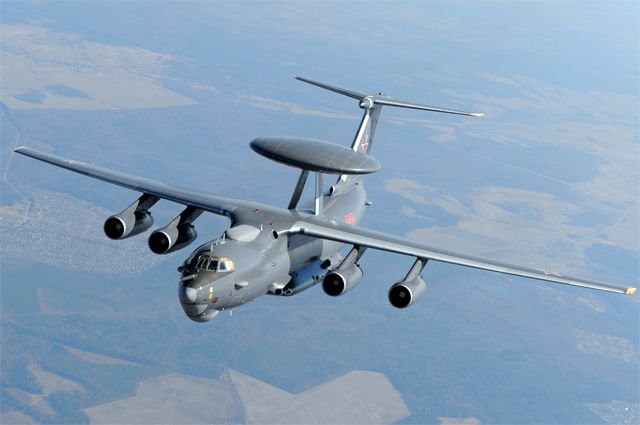
Russian military space forces will deploy an A-50U Long Range Radar Detector Aircraft (AWACS) to the Arctic region to patrol the airspace. These planes will regularly patrol the airspace in the North Pole area, monitor the situation in the region, and even participate in rescue operations. Perhaps the A-50U will be based at the military bases of Arctic Shamrock and North Clover.
In the conditions of the Arctic with its endless spaces, these planes are the only solution to extend the radar field and create a unique information space. This becomes particularly relevant in the context of the increased strategic importance of the Northern Sea Route and, consequently, the increase of the Russian military grouping in arthritis. & Nbsp;
AWACS aircraft or, & nbsp; as they are called in the West, & nbsp; AWACS & nbsp; (English Airborne Warning and Control System & mdash; & quot; Aviation warning and control system & raquo;) & mdash; it is a system without which even the most advanced aircraft are deprived of most of their capabilities. Most often, AWACS aircraft equipped with powerful radars perform the functions of air command posts. Having received data on the air situation, the head of the operation can give command to the strike forces directly from the aircraft, reporting the coordinates of targets in real time. Data from the flying command post can be received by both combat aircraft and ground air defense systems.
Russian A-50U, which received the nickname 'mushroom' in the army or “ flying saucer '', for the characteristic appearance of the locator installed above the fuselage, it performs flights at a distance of up to 7 500 km, at speeds of up to 800 km/h. The A-50U detects different types of land, air and air targets at a distance of up to 650 km. In addition, this aeronautical complex allows continuous tracking of up to 300 different targets. Including, it sees cruise and ballistic missiles, as well as hypersonic vehicles, ballistic missiles, and drones. He is also able to clearly classify aerial targets and aim dozens of hunters at them. Its systems can operate completely autonomously.
In recent years, A-50Us have been involved in various exercises, and aircraft of this type periodically fly to control the airspace of adjacent territories. Since the end of 2015, the A-50 has been used by Russia in a military operation in Syria as part of an aviation group of the Russian Aerospace Forces in Syria.
A-50 (NATO classification: Mainstay & mdash; Oplot) & mdash; it is an early warning and control aircraft. The aircraft was designed and built on the basis of the Il-76MD heavy military transport aircraft. At the same time, the cost of the A-50 is 8 times that of the base plane. It was developed at the Taganrog Aviation Scientific and Technical Complex named after V.I. Beriev in collaboration with the Moscow Instrumentation Research Institute & mdash; ASBL Vega-M. It was put into service in 1985. For a long time the aircraft remained the most secret aircraft of the USSR Air Force. The first photo of the car was not obtained in the United States until 1988. A-50U & mdash; This is the modernization of the base model A-50, taking into account modern technologies.
Currently, the Russian Army has five A-50s and four A-50Us. Today, this type of aircraft is replaced by the new A-100 complex, about which, due to increasing secrecy, little is known. Its main difference will be the phased array antenna, which offers higher performance in detecting and tracking targets.
Honored military pilot Major General Vladimir Popov told AiF.ru that the AWACS planes would strengthen the already created consortium in the circumpolar region, becoming mobile command posts for the control of aviation and air defense assets.
& laquo; Currently in the Arctic, an aviation control system is only being created, including command posts. But you have to manage the thefts, the intensity of which has increased sharply in recent years, already now. AWACS A-50U aircraft will be able to replace command posts, it is an efficient and even economical solution. Russian AWACS help expand the radar field and create a unique information space in this complex region. Most likely, these aircraft will not be permanently stationed at arctic airports; they will have temporary accommodation for aircraft refueling and crew rest. Pilots will perform tasks like in Syria, traveling to this region on & # 39; business trips & # 39 ;, & mdash; explains the expert.

